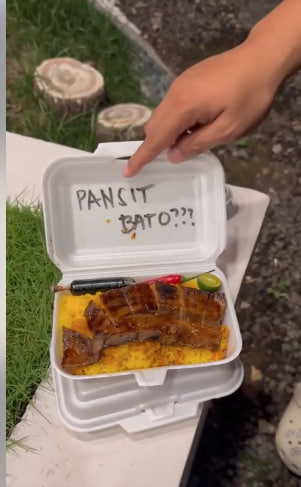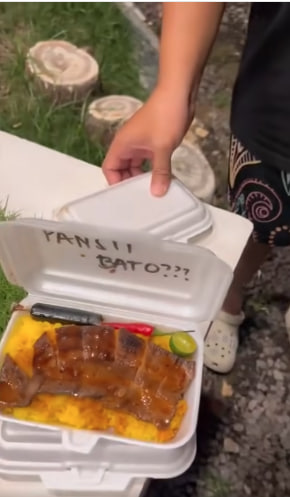
Origins and History
Pancit Bato is a traditional Filipino noodle dish that hails from the town of Bato in Camarines Sur, located in the Bicol region of the Philippines. This dish has become iconic in Bicol, not only because of its delicious flavors but also due to its connection to the local community. Bato, being a small yet vibrant town, is proud of its culinary heritage, and Pancit Bato is often considered a symbol of local pride. The dish is traditionally served during important family events, special occasions, and community celebrations.

Ingredients and Flavor Profile
The main feature of Pancit Bato is its thick, chewy rice noodles, which are quite different from the thin noodles used in other Filipino pancit dishes. These noodles are stir-fried with a mix of ingredients such as pork, chicken, shrimp, fish balls, and a variety of vegetables, including cabbage, carrots, and bell peppers. The flavor is savory, thanks to a combination of soy sauce, fish sauce, and other seasonings that provide a rich umami taste. Some variations include a touch of coconut milk, which adds a creamy, luxurious texture to the dish.

Preparation and Cooking Method
To prepare Pancit Bato, the noodles are first soaked or boiled until soft. The meats and seafood are sautéed in oil, along with garlic, onions, and other spices. The vegetables are then added, followed by the soaked noodles. The ingredients are stir-fried together, allowing the noodles to absorb the savory flavors from the sauce. The dish is often finished with a final garnish of fried garlic or a squeeze of calamansi (Filipino lime) for added zest. This cooking method ensures that every bite of the dish is packed with flavor.

Special Occasions and Symbolism
Pancit Bato is a popular dish served during Filipino celebrations such as birthdays, fiestas, and weddings. In Filipino culture, noodles symbolize long life, and serving Pancit Bato at these events is believed to bring good fortune and longevity to those who eat it. It is often prepared in large batches, making it perfect for sharing with family and friends. The dish’s ability to bring people together and create a sense of community is part of its charm, and it is often enjoyed as a social experience rather than just a meal.

Variations and Regional Differences
Though Pancit Bato is most closely associated with the Bicol region, its influence has spread to other parts of the Philippines. Different regions and even families have their own variations of the dish. Some prefer to add shrimp or squid to the mix for a seafood twist, while others might opt for a spicier version by adding chili peppers. The vegetables can also vary, with some recipes incorporating green beans, snow peas, or potatoes. In Bato, local cooks take great pride in their family recipes, and each version has its own subtle differences in flavor.

Cultural Significance
Pancit Bato is more than just a meal in the Philippines; it is an expression of Filipino hospitality and culture. Filipino food is often centered around sharing, and Pancit Bato is no exception. It is a dish that is served in large platters, meant to be shared among family members, friends, and guests. The act of serving and enjoying Pancit Bato together reflects the Filipino value of close-knit relationships and the importance of community. In the town of Bato, many restaurants and food stalls specialize in serving this beloved dish.

Health and Nutrition
While Pancit Bato is a delicious and indulgent dish, it can also be relatively healthy, depending on how it is prepared. The inclusion of fresh vegetables like cabbage and carrots adds fiber and vitamins, while the lean meats and seafood provide a good source of protein. The rice noodles themselves are a good source of carbohydrates, making the dish filling and satisfying. For those who are health-conscious, some variations of the dish can be made with less oil or without the meat, opting for a vegetarian version that is still flavorful and satisfying.

Serving and Enjoying Pancit Bato
Pancit Bato is typically served as the main dish, especially during family gatherings and celebrations. It is often paired with other Filipino dishes like fried lumpia (spring rolls), grilled meats, or even a side of pickled vegetables. The dish is often enjoyed with a refreshing drink, such as iced tea or soda. One of the most popular ways to enjoy Pancit Bato is with a squeeze of fresh calamansi juice, which adds a burst of citrusy flavor that complements the savory taste of the noodles.


